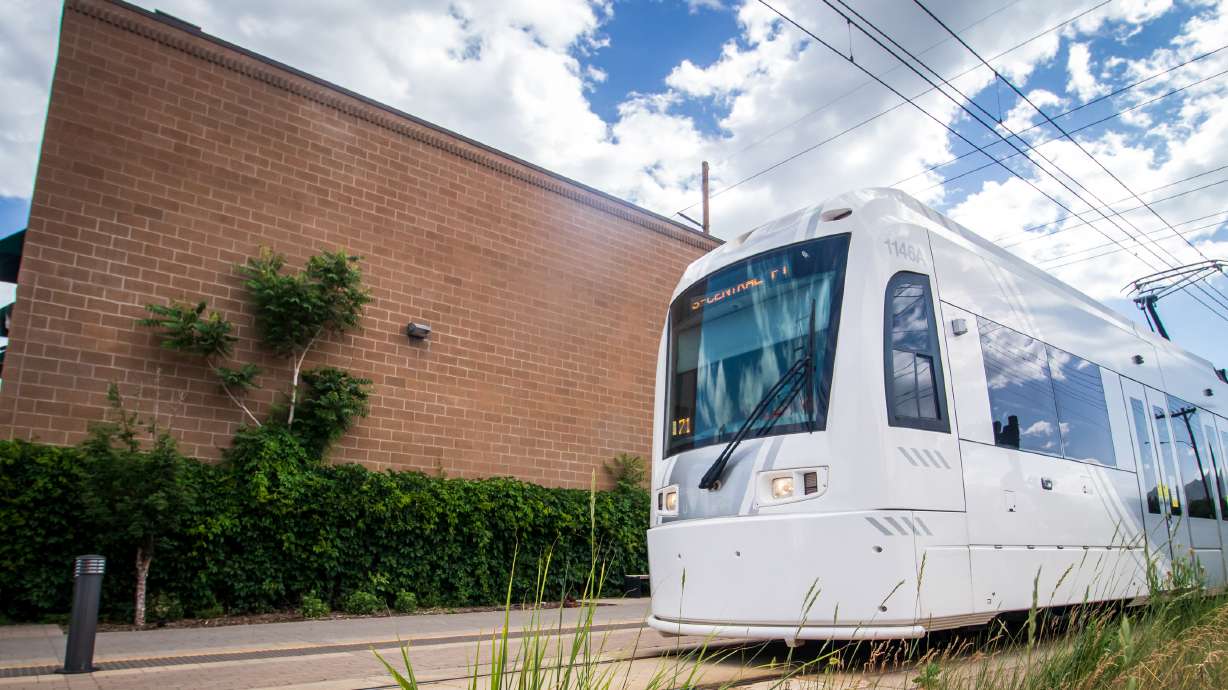Estimated read time: 5-6 minutes
This archived news story is available only for your personal, non-commercial use. Information in the story may be outdated or superseded by additional information. Reading or replaying the story in its archived form does not constitute a republication of the story.
SALT LAKE CITY — Public transit has struggled to rebound from the COVID-19 pandemic in Utah and across the country; however, one surprising mode of transportation within Utah Transit Authority's portfolio is suddenly bucking all the trends.
The S-Line, a short streetcar service that travels to and from Central Pointe Station in South Salt Lake and Fairmont Park in Salt Lake City's Sugar House neighborhood. While UTA's overall average weekday ridership in July remained 27.5% below July 2019 levels, S-Line ridership is reaching new heights.
The transit agency reported that there were 2,031 average weekday boardings on the street car in July, the first time that average weekday boardings surpassed 2,000 in the five and a half years of available data; the line first opened in 2013. July was also the third-straight month in which S-Line ridership reached all-time highs. Prior to this surge, the previous record was 1,586 average weekday boardings set in August 2017.
"When you look at those numbers, you can see the success, which is incredibly strong," said Jay Fox, UTA's executive director. "The big fight in the transit industry is can we get back to even close to 100% of our pre-pandemic ridership? On the S-Line, in June, we were 139% of pre-pandemic ridership and in July we were at 127%, so ridership has been strong."
Sure, the S-Line only accounts for about 2% of overall ridership, but UTA executives say it could offer insights into the future of transit. So, why is it that one of UTA's shortest services available is surging past pre-pandemic levels?
Stellar growth
It's too early to say what's behind the sudden spike in S-Line ridership, said Carl Arky, a spokesman for the Utah Transit Authority. However, the agency does have some theories.
First, there's plenty of new growth by the S-Line for both South Salt Lake and Salt Lake City. The latest of those is Sugarmont Apartments, a massive complex located across the street from the S-Line's current eastern terminus at McClelland Street.
We're finding ridership at all times of the day, not traditional commuting peak hours.
–Jay Fox, Utah Transit Authority executive director
But there are other possibilities. For example, Utah experienced its highest average gas prices this summer, which may have persuaded people to jump on the S-Line instead. Arky said there's also a generational shift moving away from cars; for instance, the average UTA rider is 34 years old, and Sugar House is one of the places many young adults are moving to.
The S-Line falls closer to high-density residential areas, meaning the spike may also be a representation of an emerging shift in how public transit is used, Fox adds. He explains that post-pandemic data indicates public transit is starting to be used for all sorts of reasons beyond going to and from work, which was a major driver before the pandemic.
"We're finding ridership at all times of the day, not traditional commuting peak hours," he said, adding that Saturday and Sunday ridership is "incredibly strong" across forms of public transportation. "So, I think a lot of our customers are using ... our system as more of a lifestyle network now as opposed to what was traditionally a commuting network. And in that regard, UTA is no different than some of the other areas of the country, some of the other transit systems."

When UTA held its "Free Fare February" earlier this year, they noticed strong ridership during the weekends. The agency also conducted surveys and found that entertainment and hospitality was the top motivator for new transit riders, Fox added.
The S-Line isn't the only form of transportation making massive strides that might indicate this new use of transit. UTA on Demand, the agency's micro-transit program, is also growing. However, since UTA only started making it a permanent service in August 2021, there is no pre-pandemic comparison. Its ridership in July jumped to 732 average weekday boardings, a 5% increase from June and a 123% increase from the first month it was offered.
It's also expected to grow because new service began this week in Tooele and Davis counties.
Whatever the case may be, Fox is optimistic that overall ridership can reach pre-pandemic levels again sometime in the future.
The future of the S-Line
The S-Line's sudden popularity spike may also play into Salt Lake City's desire to expand the line farther into Sugar House.
Jon Larsen, Salt Lake City's transportation director, told KSL.com that the city is still working on getting the line extended to Highland Drive. The city is coordinating this more with the Utah Department of Transportation now because UDOT took oversight over any UTA project with state funding, something that the Utah Legislature changed this year.
The Legislature approved a transportation bond last year that sent $12 million toward the extension, which was seen at the time as a step toward expansion onto Highland Drive someday in the future. Larsen noted that Salt Lake City Mayor Erin Mendenhall views this extension as an "important priority" and that the city is working to extend the line "as soon as feasibly possible."
Highland Drive also stands to receive a makeover through a two-year renovation project that begins in 2023.
UTA is equally hopeful about S-Line's future.
"We're working with them and a lot of planning what the particular alignment will be for that expansion," Fox said. "But you see the numbers, you see the demand and (the S-Line) is a strong focus for us."









